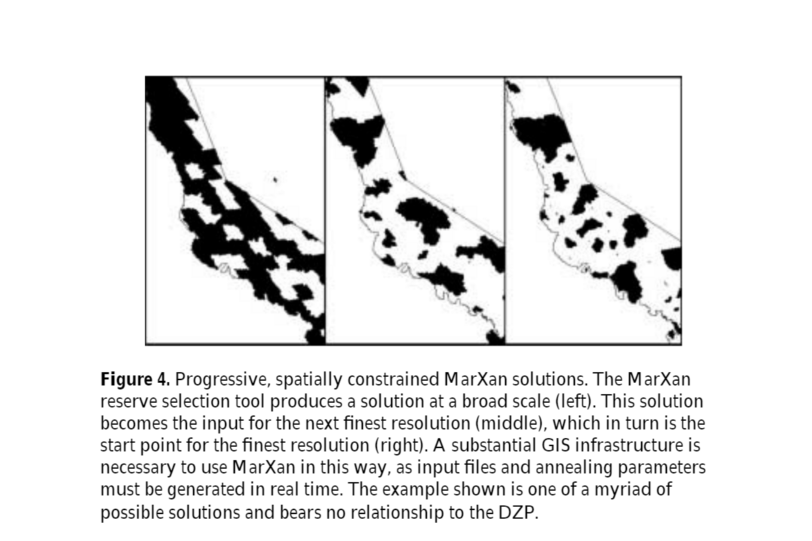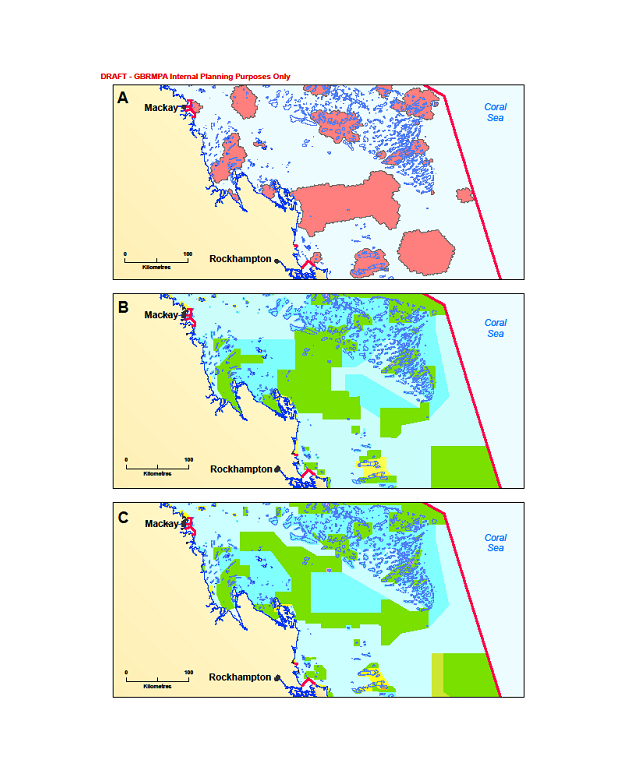


Decision-support systems (DSS) or analytical tools, such as Marxan or SeaSketch, are often promoted as a pre-requisite for effective marine spatial planning, providing a quick and reliable solution to a planning problem. It is natural for DSS users to hope that using the DSS will generate ‘the answer’ and hence provide the solution to their planning problem. More often than not, DSS produce simplistic results which need to be modified using other planning methods. All DSS tools have limitations and cannot compensate for missing or incomplete data. They can produce unintended side-effects and often are unable to match the complexity of real-world planning problems. Planning outcomes are of little practical value if social, cultural and economic values are not considered – however rarely is such data readily available in a form amendable to a DSS or at the an appropriate spatial resolution. In the GBR, the DSS generated a ‘footprint’ of various ‘no-take’ zone options, but it could not cater for the eight zone types, so other planning methods needed to be applied. However the real benefit was the ability to generate metrics to inform the development of the best possible no-take zoning network.
Marxan was developed by the University of Queensland as a modified version of SPEXAN to meet the needs of the GBRMPA during the Representative Areas Program and the development of the 2003 Zoning Plan. The images below show that Marxan did not produce the final zoning network in the GBR, but it did provide invaluable decision support through post-hoc accounting of various options, enabling a rapid assessment of the implications of each option in terms of each of the planning objectives.
In reality a DSS cannot undertake the fine scale tuning and political trade-offs that inevitably occur in the final stages of planning, so it can never produce the final pragmatic solution for any planning task. Some shortfalls of DSS are:
- Some planning information, especially socio-economic data, may not easily be applied into a DSS.
- While a DSS may generate a ‘solution’, it is inevitably refined if/when socio-economic values are introduced. These values are often not represented in the data yet are often some of the most fundamental values for a socially-acceptable outcome.
- Poor data will always lead to a poor result.
- Most contemporary DSS tools are unlikely to meet all the needs of a user; in the GBR planning program even simple ‘rules’ such as ‘all reserves should be no smaller than ...’ were not able to be directly implemented by a DSS.
- Some stakeholders are wary of ‘black-box’ models or DSSs (e.g. Marxan or Seasketch) that they do not understand.